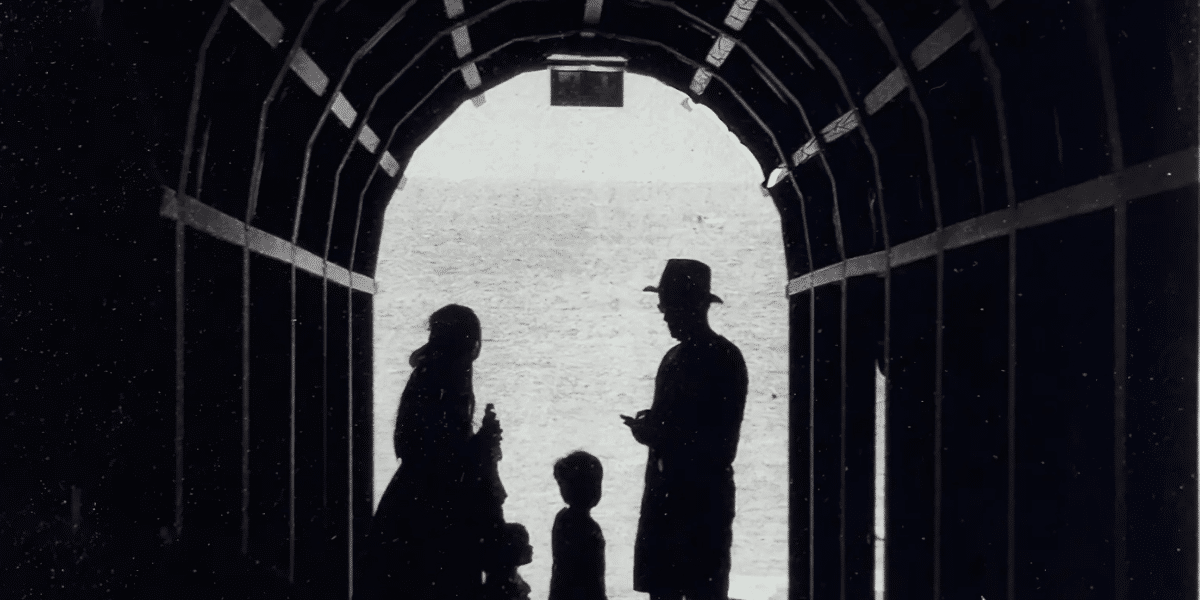By: Band-Age
Qiyue Zhang: Hello, I’m delighted to have the opportunity to share my work. This piece was captured during my travels in Italy, featuring a family of four in Vernazza. I felt that the scene’s contrast of light and shadow was perfect for photography, so I waited patiently until this family of four appeared and captured the moment. I chose black-and-white film because it better accentuates the contrast of light and shadow, as well as the sense of time’s passage. The future direction of the family, as the basic social unit of humanity, has always been a theme of interest to me. In both Italy and China, family culture holds a very important position, but with societal development, the form and function of the family are also constantly changing.
Reporter: In this work, the structure of light and shadow is very striking. Could you discuss the intention behind this composition?
Qiyue Zhang: Of course. In this work, light and shadow not only represent the physical changes in lighting, but also symbolize the relationship between family and the future. The bright ocean represents the vast, unknown possibilities ahead, which are both hope and challenge. The dark area, the corridor where the family of four is located, represents the warmth and shelter of the family, but it may also signify restraint and limitation. This contrast of light and shadow is my contemplation of the future direction of the family.
Reporter: You mentioned that both Italy and China have a strong cultural atmosphere of family. In your opinion, what are the similarities and differences between the family cultures of these two countries?
Qiyue Zhang: This is a very interesting topic. In my view, both Italian and Chinese family cultures place great emphasis on kinship and family ties. In Italy, the family is the core of life, and people often gather together to enjoy food and share their lives. In China, the family also occupies a pivotal position, and filial piety towards parents and respect for elders are traditional virtues. However, with the acceleration of modernization, the family structures of both countries are also changing. For example, in Italy, more and more young people choose to live alone or marry later; in China, with the advancement of urbanization, people are gradually accepting more diversified family forms.
Reporter: In this work, what message or thought do you want to convey to the audience through the theme of family?
Qiyue Zhang: What I want to convey is that the family, as the basic social unit of humanity, has a diverse and full of possibilities for the future, which is a part that we need to constantly examine and adjust. With societal changes, the form and function of the family may change. I hope that when viewers see this work, they will contemplate the current situation and changes regarding the topic of family.
Reporter: Qiyue Zhang, we’re very curious about how your photography journey began. Was there a specific moment or event that sparked your passion for photography?
Qiyue Zhang: My photography journey was deeply influenced by Chinese culture. Since childhood, I have been curious about various things and liked to ponder deeply on the issues behind phenomena. When I was young, I loved looking at kaleidoscopes. Every time I turned the kaleidoscope, it presented differently in my eyes. Just like after I started photography, every time I pressed the shutter, it was like capturing a story in an instant. This made me realize that photography was the perfect way to express my curiosity and inquiry about the world. From then on, I decided to use the lens to capture the world from different perspectives.
Reporter: In your photographic works, we often feel a profound sense of humanistic care. How do you incorporate this emotion into your photography?
Qiyue Zhang: I believe that photography is not just about recording images; it’s also about conveying a story or thought. When shooting, I always try to understand the elements within the frame and enhance the main idea of the photograph through the use of angle, lighting, composition, and color. I hope that my works can stimulate viewers’ thinking and create a connection between social humanities and various scenes.
Published by Stephanie M.

















